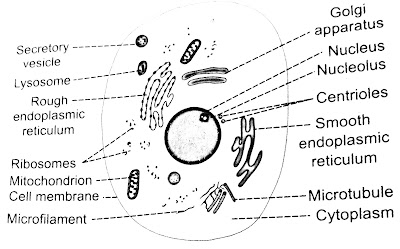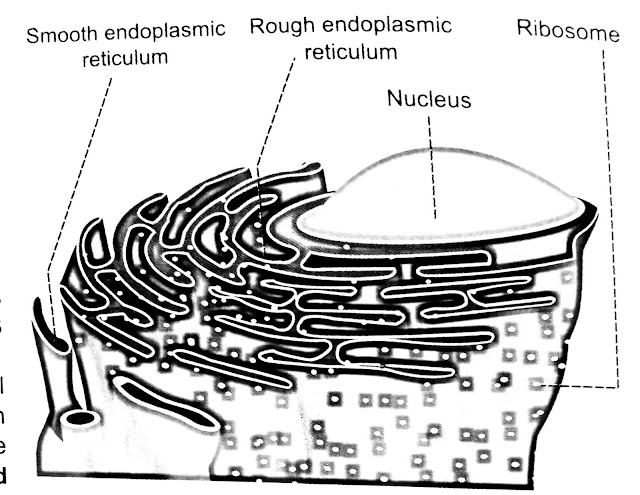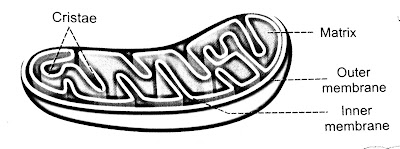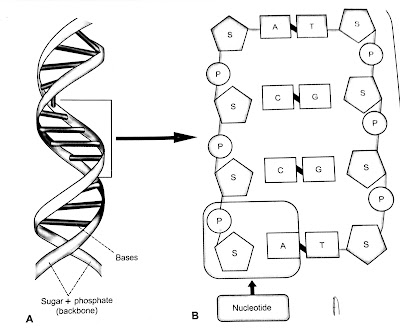All the living things are composed of cells. Cell is defined as
the structural and functional unit of the
the living body.
Characteristics of cell
1 Needs nutrition and oxygen.
2 produces its own energy necessary for its growth.
3 Eliminates carbon dioxide and other metabolic wastes.
4 maintains the medium.
5 Shows immediate response to the entry of invaders like bacteria
or toxic. substances into the body.
6 Reproduces by division.
TISSUE
The group of cells having similar function.
The primary tissues include
1 Muscle tissue
2 Nervous tissue
3 Epithelial tissue
4 connective tissue
Organs
An organ is defined as the structural that is formed by two or
more primary types of tissues, which execute the function of the organ. Some of
the organ in the body are brain, heart, lungs, stomach, intestine, liver,
gallbladder, pancreas, kidneys, endocrine glands, etc.
SYSTEM
The organ system is defined as group of organ that work together
to carry out specific functions of the body.
1 Digestive system
2 Excretory system
3 Cardiovascular system
4 Respiratory system
5 Reproductive system
6 Endocrine system
7 Musculoskeletal system
8 Nervous system
Structure of cell
 |
| STRUCTURE 0F THE CELL |
Each cell is formed by a cell body and a membrane
covering the cell body called the cell membrane.
1 Cell Membrane
2 Cytoplasm
3 Nucleus
1 Cell Membrane
Cell membrane is a protective sheath envelping cell body. It is
also know as plasma membrane or plasmalemma.
Composition of cell membrane
1 Proteins
2 Lipids
3 Carbohydrates
Structure of the cell membrane
 |
| CELL MEMBRANE |
On the basis of structure cell membrane is called a unit
membrane
or a three layeres of cell membrane.
1 Structural Modal of the cell membrane
1. Danielli Davson model
2. Unit membrane model
3. Fluid mosaic model
2 Lipid Layers of the cell Membrane
3 Functions of lipid layer in cell Membrane
4 Protein Layers of cell Membrane
Functions of cell membrane
1 Protective function
2 selective permeability
3 Absorptive function
4 Excretory function
5 Exchange of gases
6 Maintenance
2. CYTOPLASM
Cytoplasm of the cell is the jelly like material formed by 80% of
water. It contains a clear liquid portion called cytosol and various particles
of different shape and size.
These particles are proteins carbohydrates lipids or electrolytes
in nature.
Cytoplasm also contains many organelles with distint
structure and
function.
ORGANELLES IN CYTOPLASM
1 Endoplasmic Reticulum
Endoplasmic reticulum is a network of tubular and microsomal
vesicular structures which are interconnected
With one another. It is covered by a limiting membrane which is
formed by proteins and bilayered lipids.
TYPES
1 Rough Endoplasmic Reticulum
2 Smooth Endoplasmic Reticulum
2 GOLGI APPARATUS
Golgi Apparatus is a membrane bound organelle involved in the processing
of proteins.
Itis present in all the cells except red blood cells.
Fuction of golgi apparatus
1. Processing of materials
2. Packaging of materials
3. Labeling and delivery of materials
3 LYSOSOMES
Lysosomes are the membrane bound vesicular organelles found
throughout the cytoplasm.
The lysosomes are formed by golgi apparatus. The enzymes
synthesized in rough endoplasmic reticulum are processed and packed in the form
of small vesicles in the Golgi apparatus.
Types of Lysosomes
1 Primary lysosome
2 Secondry lysosome
Fuction of Lysosomes
1 Degradation of macromolecules
2 Degradation of worn out organelles
3 Removal of excess secretory products in the cells
4 Secretory function secretory lysosomes
4 PEROXISOMES
Peroxisomes or microbodies are the membrane limited vesicles like
the lysosomes. Unlike lysosomes peroxisomes are pinched off from endoplasmic
reticulum and not from the Golgi apparatus. Peroxisomes contain some oxidative
enzmes such as catalase urate oxidase and D-amino acid oxidase.
Functions of Peroxisomes
1 Breakdown the fatty acids
2 Degrade the toxic substances
3 Form the major site of oxygen utilization in the cells
4 Acceleration gluconeogenesis
5 Degrade purine to uric acid
6 Participate in the formation of myelin
7 Play a role in the formation of bile acids.
5. MITOCHONDRION
Mitochondrion is a membrane bound cytoplasmic organelle concerned
with production of energy. It is a road shaped or oval shaped structure. The
outer membrane is smooth and encloses the contents of mitochondrion. The inner
membrane is folded in the form of shelf like inward projections called cristae and
it covers the inner matrix space.
FUNCTION OF MITOCHONDRION
1 Production of Mitochondrion
2 Synthesis of ATP
3 Apoptosis
4 Other function
6 RIBOSOMES
Ribosomes are the organelles without limiting membrane. These
organelles are granular and small dot-like structures with a diameter of 15 nm.
Composition
Proteins 35%
Ribonucleic acid 65%
CYTOSKELETON
Cytoskeleton is the cellular organelle present throughout the
cytoplasm. It determining the shape of the cell. It is also essential for the
cellular movements and the response of the cell to external stimuli.
Components
1.Microtubule
2.Intermediate filaments
3.Microfilaments
1.Microtubules
Microtubules are the straight hollow and tubular structures of the
cytoskeleton. These organelles without the limiting membrane are arranged in
different bundles. Each tubule has a diameter of 20 to 30 nm.
2. Intermediate Filaments
Intermediate filaments are the structures that form a network
around the nucleus and extend to the periphery of the cell. Diameter of each
filament is about 10 nm
3. Microfilaments
Microfilaments are long and fine thread like structures with a
diameter of about 3 to 6 nm. These filaments are made up of non tubular
contractile proteins called actin and myosin. Actin is more abunfant than
myosin. Microfilaments are present throughout the cytoplasm. The microfilaments
present in ectoplasm contain only actin molecules and those present in
endoplasm contain both actin and myosin molecules.
Function of microfilaments
1 Give structural strength to the cell
2 Provide resistance to the cell againts the pulling forces
3 Are responsible for cellular movements like contraction gliding
and cytokinesis
NUCLEUS
Nucleus is the most prominent and the largest cellular organelle.
Nucleus is present in all the cells in the body except the red blood cells. The
cells with nucleus are called eukaryotes and those without nucleus are known as
prokaryotes. Presrnce of nucleus is necessary for cell division.
STRUCTURE OF NUCLEUS
Nucleus is covered by a membrane called nuclear membrane and
contains many components. Major components of nucleus are nucleoplasm chromatin
and nucleolus.
Nuclear Membrane
Nuclear membrane is double layered and porous in nature. This
allows the nucleoplasm to communicate with the cytoplasm. The outer layer of
nuclear membrane is continuos with the membrane of endoplasmic reticulum.
The space between two layers of nuclear membrane is continuos with
the lumen of endoplasmic reticulum.
Nucleoplasm is a highly viscous fluid that forms the ground
substance of the nucleus. Itis similar to cytoplasm present outside the
nucleus. Nucleoplasm surrounds chromatin and nucleolus.
Chromatin
Chromatin is a thread like material made up of large molecules of
DNA .The DNA molecules are compactly packed with the help of a specialized
basic protein called histone.
Chromosomes
Chromosome is the rod shaped nuclear structure that carries a
complete blueprint of all the hereditary characteristics of that species.
Nucleolus
Nucleolus is a small round granular structure of the nucleus. Each
nucleus contains one or more nucleoli. The nucleolus contains RNA and some
proteins which are similar to those found in ribosomes.
Functions of Nucleus
1.control of all the cell activities that include metabolism
protein synthesis growth and reproduction
2. Synthesis of RNA
3. Formation of subunits of ribosomes
4. Sending genetic instruction to the cytoplasm for protein
synthesis through messenger RNA
5. Control of the cell division through genes
6. Storage of hereditary information and transformation of this
information from one generation of the specirs to the next.
DEOXYRIBONUCLEICACID (DNA)
DNA is a nucleic acid that carries the genetic information to the
offspring of an organism. DNA forms the chemical basis of hereditary
characters. It contains the instruction for the synthesis of proteins in the
ribosomes. Gene is a part of a DNA molecule.
DNA present in the nucleus and mitochondria of the cell. The DNA
present in the nucleus is responsible for the formation of RNA.
STRUCTURE OF DNA
DNA is a double stranded complex nucleic acid. It is formed by
deoxyribose phospheric acid and four types of bases. Each DNA molecules
consists of 2 polynucleotide chains
Each chain of DNA molecules consists of many nucleotides.
1. Deoxyribose - Sugar
2. Phosphate
3. One of the following organic
Purines - Adenine
- Guanine
Pyrimidines - Thymine
- Cytosine
GENE
Gene is a portion of DNA molecule that contains the message or
code for the synthesis of a specific protein from amino acids. It is like a
book that comtains the information necessary for protein synthesis.Gene is
considered as the basic hereditary unit of the cell.
Genetic disorders
A genetic disordrr is a disorder that occurs because of the
abnormalities in an individuals genetic material.
Causes of gene disorders
1. Genetic variation
2. Genetic mutation
Classification of genetic Disorders
1. Single gene disorders
2. Multifactorial genetic disorders
3. Chromosomal disorders
4. Mitochondrial DNA disorders
RIBONUCLEIC ACID
RNA is a nucleic acid that contains a long cgain of nucleotide
units. It is similar to DNA but contains ribose intead of deoxyribose.
Structure of RNA
1 Ribose - Sugar
2 Phosphate
3 One of the following organic bases
Purines - Adenine (A)
- Gianine (G)
Pyrimidines - Uracil
- Cytosine
Types of RNA
1. Messenger RNA
2. Transfer RNA
3. Ribosomal RNA
STEM CELLS
stem cells are the primary cells capable of reforming themselves
through mitotic division and differentiating into specialized cells.
Types of Stem Cells
1. Embryonic stem cells derived from embryo
2. Adult stem cells derived from adults
1. Embryonic stem cells
Embryonic stem cells are derived from the inner cell mass of a
blastocyst which is an early stage of embryo.
It takes about 4 to 5 days after fertilization to reach the
blastocyst stage and it has about 30 to 50 cells.
2. Adult stem cells
Embryonic stem cells do not diappear after birth. But remain in
tha body as adult stem cells and play a role in repair of damaged tissues.
Adult stem cells are the undifferentiated multipotent progenitor
cells found in growing chhildren and adults. These are also known as somatic
stem cells.
Two types of stem cells are present inbone marrow
1 Hemopoietic stem cels
2 Bone marrow stromal cells





0 comments:
Post a Comment